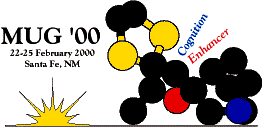|
10x40k Crunch
Scott Dixon Jeff Blaney Dave Weininger 
|

|
|
10x40k Crunch
Scott Dixon Jeff Blaney Dave Weininger 
|

|
| size, MB | description |
|---|---|
| 205.9 | m4x10x40k.DP, biggest file |
| 235.0 | all database files |
| 65.3 | merlin pool (3,620,250 dataitems) |
| 72.9 | merlin total, including overhead |